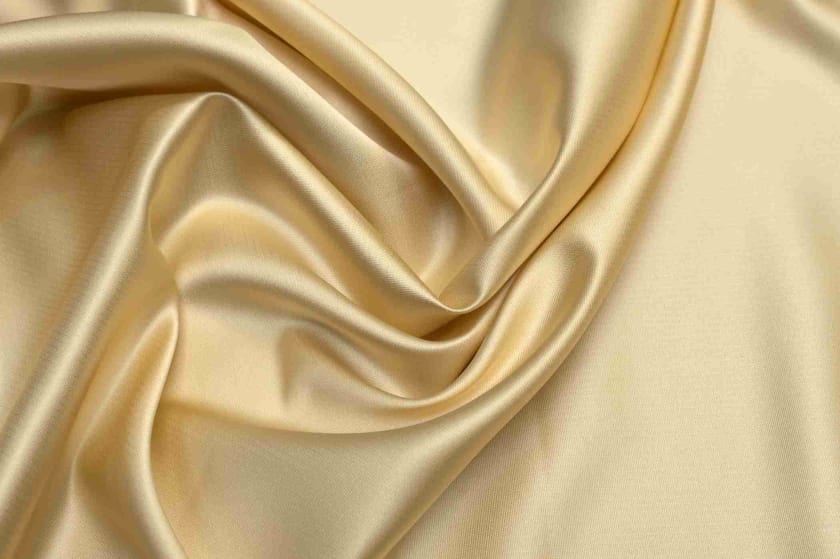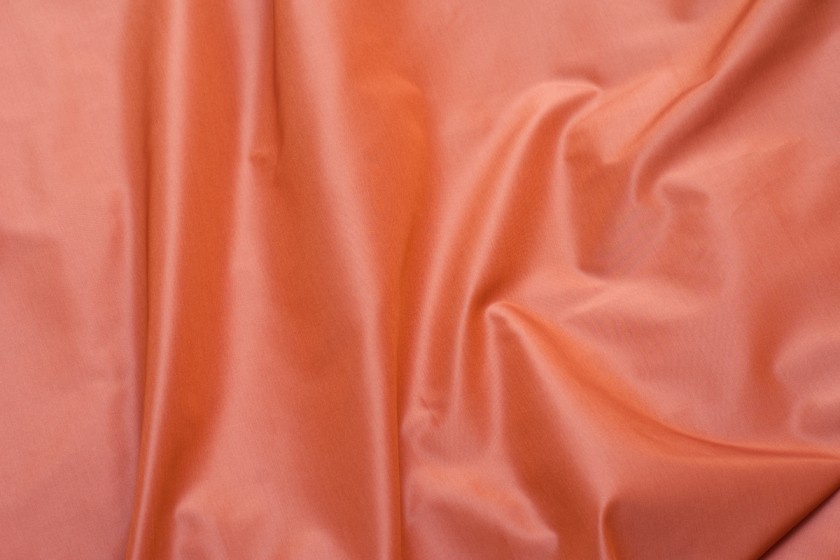10 Tips For Sewing Taffeta Fabric



If you’re planning to sew taffeta dresses for your little ones during the upcoming holiday season and don’t know the correct way to do it, you are at the right place. Since Taffeta material is used to sew wedding gowns and evening partywear dresses, as a fashion designer, I would like to share some of the tips and tricks for sewing it.
Taffeta material is a fine and crisp fabric that rustles when there is a movement. Hence this fabric is quite noisy and cannot be used for manufacturing regular officewear. It has a lustrous sheen which makes it perfect for stitching glamorous dresses.
What is Taffeta Fabric?
Taffeta cloth is made from multiple kinds of fibers like nylon, polyester or viscose. Polyester is a man-made fabric extracted from petroleum. The reaction between terephthalic acid and ethylene glycol results in the production of these strong fibers.
Nylon is made of the monomers of adipic acid and hexamethylenediamine when they are subjected to a chemical polymerization reaction. Viscose is made from tree wood pulp treated with chemicals like carbon disulfide. Hence, all these fibers are synthetic in nature and the taffeta cloth is made using a blend of these fibers. Sometimes even acetate fiber is used in the blend; however, its use is nominal.
Tips for stitching Taffeta Material

1. Never wash silk taffeta in your washing machine. It should only be dry cleaned. Use the delicate cycle setting of your washing machine to wash polyester taffeta. Wash the material before you start stitching to ensure it doesn’t shrink or lose shape later. Taffeta material frays at the ends quickly and it is always a good idea to run an overstitch before washing the material.
2. Since taffeta material is synthetic, using hot iron can shrink it and spoil the material forever. It is always a good idea to test a small strip of the taffeta cloth to check how much heat it can withstand. Once you get the right setting on your iron box, go for the same setting. Before starting to stitch, press the material from the backside to ensure its smoothness.
3. If your scissors are not sharp, they will spoil the edges while cutting the fabric. Since taffeta material is very strong, use a very sharp pair of scissors and keep a few extra pairs of scissors handy. If you are planning to use a lot of taffeta cloth for the dress, your scissors may turn blunt very quickly.
4. Do not use pins while stitching taffeta material. The material will get spoiled and there will be gaps, which will be visible after the stitching is complete. While cutting, use weights instead to keep the fabric at one place.
While sewing, use a minimum number of pins and only in the seam where it can be concealed. Use good quality silk pins which are thin and sharp so that the holes are not visible on the dress after you complete stitching. You may even use wonder clips or binder clips instead.
5. My suggestion would be to use 70/10 or 80/12 Microtex needles. I have always got the best results from them.
6. Always use a new needle when stitching taffeta cloth because old needles are blunt and will leave holes. Hold the fabric taut while stitching and the best option is to ask someone else to hold it properly while you can solely focus on stitching it.
7. Taffeta material is very delicate and if you have long nails, it might spoil the material. It is a good idea to clip your nails before you start working with taffeta cloth.
8. Always sew taffeta material with soft cotton thread or silk thread. This will ensure that there are no imprints.
9. If you are planning to sew a taffeta band and attach it to another kind of material like silk tulle or satin, then you need to be careful. You will need to make the markings on the freezer paper using a sharpie marker. The marks left by the marker will not spoil the fabric and will make it easy for you to stitch the taffeta border.
Lay down the wax paper to protect the pressing surface and then place the tulle over it. Now, place the freezer paper where the shiny side is facing down. This will help you to see the markings properly through the wax paper and you can stitch properly. You can check also some YouTube videos to get a better idea.
10. Taffeta is a very silky material and it unravels easily. Finish seams with pinking or zigzag stitches. You may think about using serged edges or french seams too. The best option would be to try it on a sample strip of taffeta cloth initially before you decide on the final seam stitch.
So, go ahead, enjoy your time with taffeta material. I enjoy stitching with this material a lot and my daughters love the frilled and layered dresses that I make for them. I always use my imagination to add lace, sequins, or different kinds of materials while stitching the dress. I always check multiple YouTube videos and websites before choosing the final design. Then, I draw the design on cardstock paper. Once I am sure of all the components, I go for the measurements and start with my work. Happy stitching!!



















